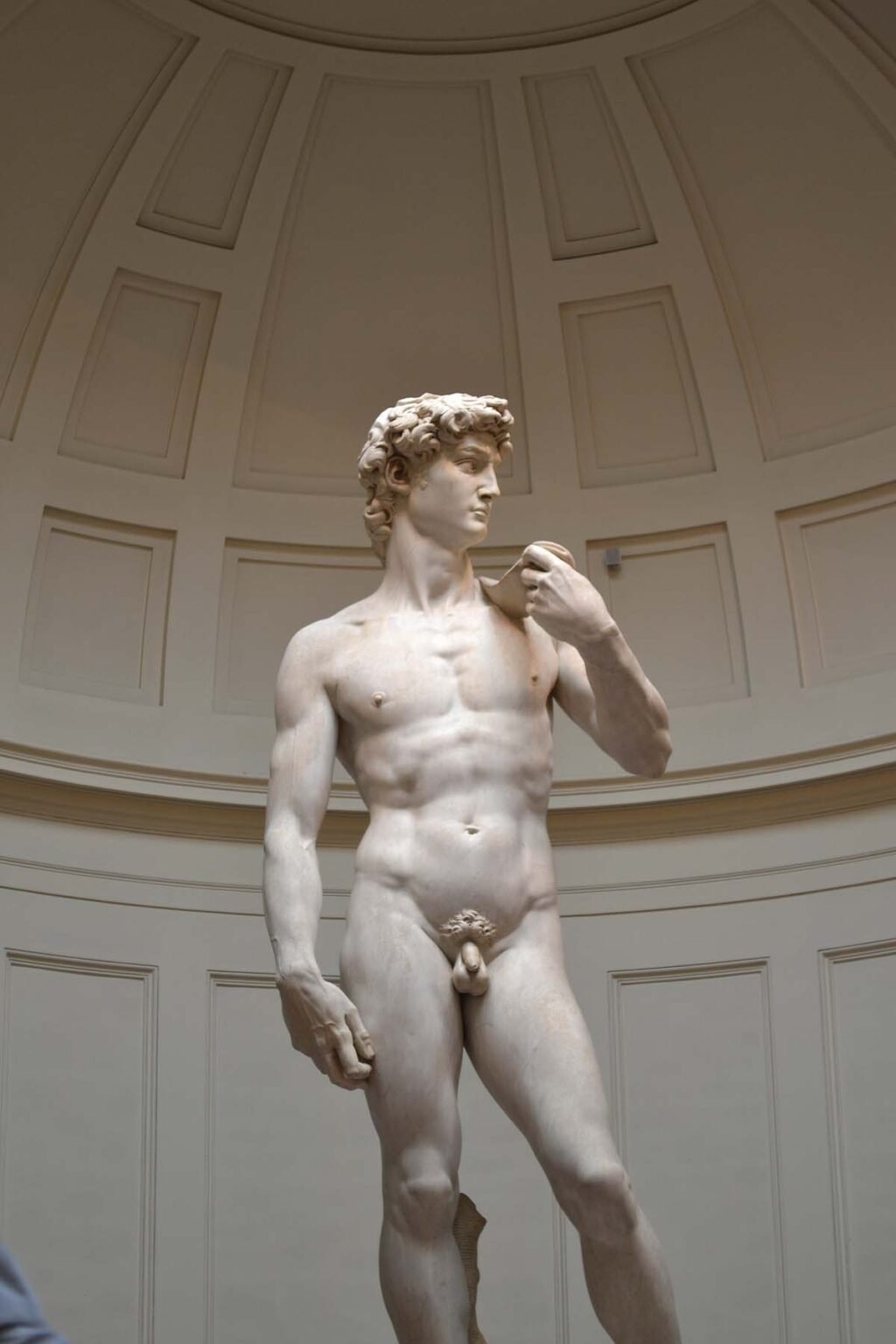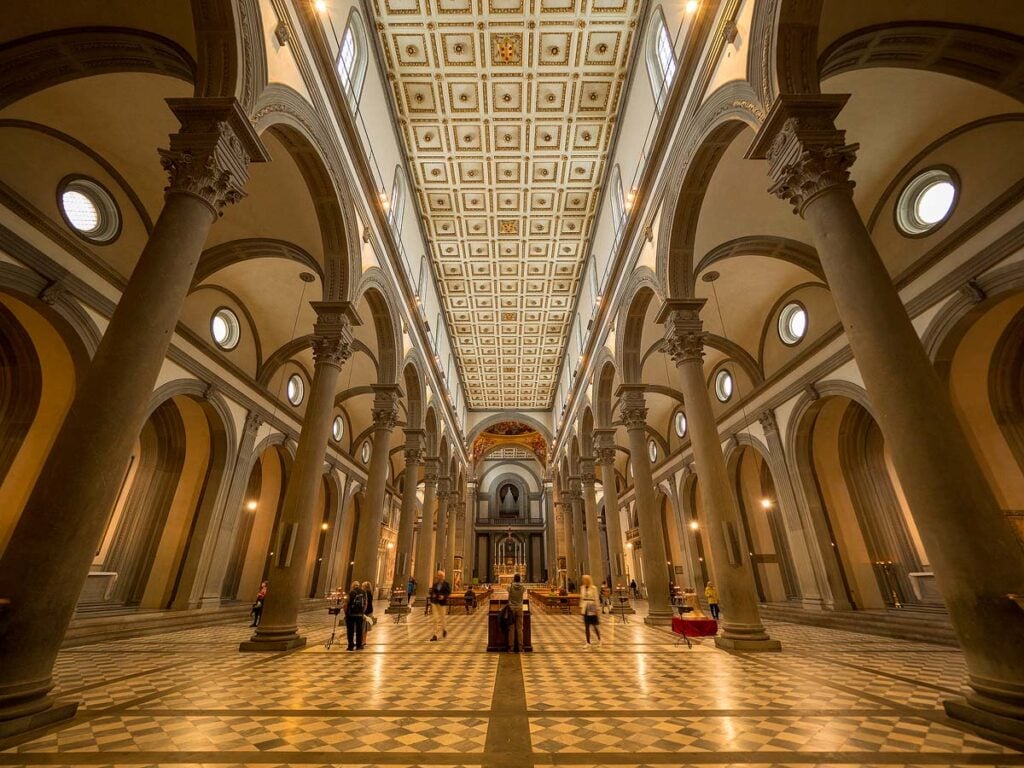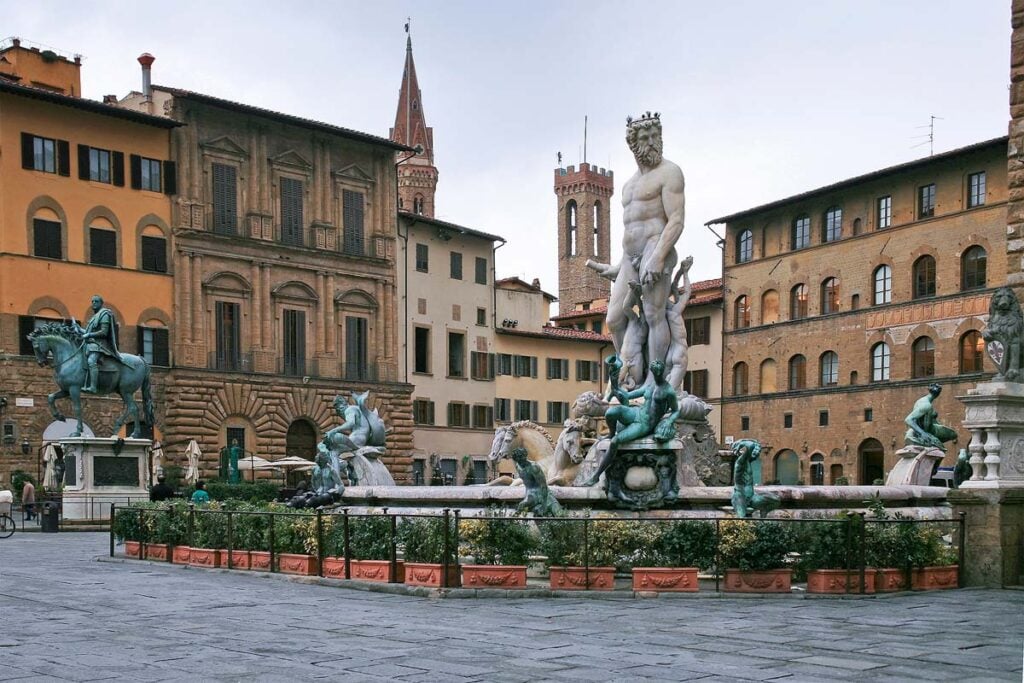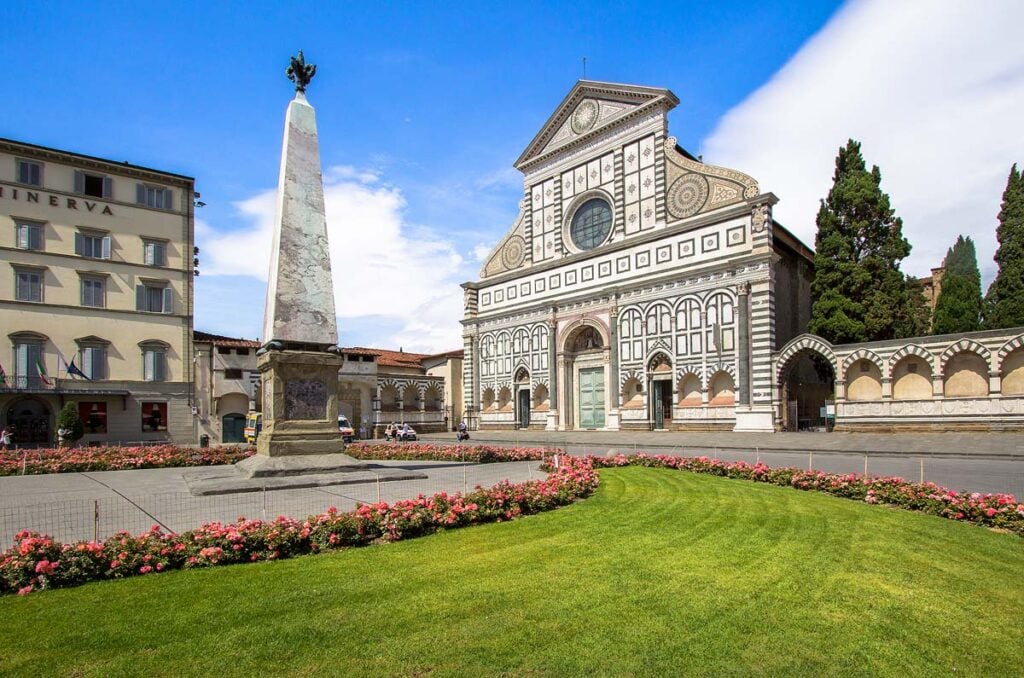This post may contain affiliate links, please see the privacy policy for details.
Florence is one of the most culturally rich and fascinating countries in Europe, filled with Renaissance art, history, monumental architecture, and some of the most important museums in the world. Not only is Florence full of activities, tours, and great Italian food, but the city is a walking museum with many of the grandest sites built right into the city walls. In this guide, I will take you through visiting the City of Florence. You will learn about the best things to do in Florence, Italy, including must-see monuments, top sights, and memorable activities.

To see it all, you need at least five days in Florence, but most of us don’t have the luxury of staying for that long. Considering this, I have outlined the most important things to do, assuming you only have three days. Even within this time frame, it will be impossible to do everything, but if you fill your days with these activities and do a little advance planning, you can feel good about what you have accomplished during your stay in Florence.

Whether you love food, art, history, architecture, spending time outdoors, or good wine, there is something for you when visiting Florence.

Getting Around Florence
Florence, located in northern Italy, is a city built and created around the importance and love of art and architecture. The city is considered a UNESCO World Heritage site and is best visited on foot.
Florence is a walkable city. Everything is close enough that you can easily navigate it on foot without feeling overly tired or worn out. The major attractions are all within a small area in the city center, with just a few exceptions (Piazzale Michelangelo primarily) located slightly further out.

If you wish, you can also easily bike Florence, renting from various storefronts that also offer bike tours or, more simply, sign up for Ridemovi, which offers regular or electric bike and electric scooter rentals. The city is constantly increasing its bike safety awareness and bike paths.

For travelers who prefer to get outside the city walls or have difficulty walking, the city center and outskirts are connected by the Autolinea Toscana buses and tram. Buy tickets either online or at newsstands and tabaccai (identified with a large black T sign hanging outside).
How to Best See the Sites in Florence
The suggested sites and monuments below require tickets to visit. While you can buy each ticket individually and pre-book (which I do suggest for most), it’s also worth noting combined tickets and other entrance options.

Be sure to read the entire ticket possibilities before actually purchasing. Many of the sites in Florence offer combined tickets (Pitti Palace and Boboli Gardens sold as a combined ticket or separately, for example), granting you access to more than one activity and/or monument. It’s a pity to buy a ticket and then realize you could have purchased a combined ticket to another site you planned on seeing as well.

The best bank for your buck, however, is the Firenze Card, a digital or paper pass valid for 72 hours granting you access to many of Florence’s most popular tourist attractions (Duomo not included). It’s an excellent deal!
Visit the Santa Maria del Fiore Duomo and the Baptistry of St. John
The Florence Cathedral of Santa Maria del Fiore (known simply as il Duomo by locals) is Florence’s most important monument. The Duomo of Florence, the 4th largest cathedral in Europe, was constructed in the 14th century under the direction of Brunelleschi.

Decorated elaborately in white, green, and pink marble, the Duome is not only Florence’s most iconic site but also an important religious center for practicing Catholics. The inside of the Santa Maria del Fiore Duomo isn’t nearly as impressive as the outside, but it’s worth a visit (free but often a long line).

More worth your time is visiting the Baptistry of St. John next door. From the outside, you can view the famous bronze doors known as the Gates of Paradise. As you go indoors to Florence’s oldest monument, dating back to the 5th century, take your time to study the elaborately decorated mosaics.

You can also brave the 463 stairs to the top of the Duomo, known as the cupola, to enjoy a breathtaking view of Florence’s city center. This hike isn’t for everyone, though, as the stairs can get steep and the corridors very narrow. You can also book a guided tour to climb to the top, granting access to private terraces not open to the public.
Insider Tip: To climb the Duomo, it’s mandatory to reserve beforehand. You can book on their official website and purchase a variety of passes such as the Brunelleschi pass, valid for three days and includes entrance to the Duomo complex of Brunelleschi’s dome, the Baptistery, Opera del Duomo Museum, Giotto’s Bell Tower, and the Santa Reparata crypt.
Allow yourself at least half a day to visit the whole Duomo complex.

Climb Giotto’s Bell Tower (Campanile di Giotto)
If you aren’t up for a dome climb, Giotto’s bell tower, designed in the early 14th century, is a great alternative, located in Piazza del Duomo. It’s not quite as long and has an even more spectacular view than the Duomo, in my opinion. Note that unlike in the Duomo, there are several places where you can stop off and take a small break before carrying on with the climb.

If you have no interest in visiting or climbing the Duomo, opt for the Giotto Pass, good for three dates and grants you access to the Baptistery, Opera del Duomo Museum, Santa Reparata Crypt (located underneath Duomo), and Giotto’s Bell Tower.
Museo dell’Opera del Duomo
Recently renovated, the Museo dell’Opera del Duomo houses all the original works, including the original facade, of the Duomo. This is a must-see museum if you have a little more time in Florence, as it helps give context to the actual Duomo and its Baptistry.

What I like about this museum is that it tends to be much less crowded than the Uffizi and allows you to cool off from the summer heat. Don’t miss the original Gates of Paradise by Ghiberti and Michelangelo’s Pietà.
Insider Tip: Entrance to this museum is often included in combination tickets to the Duomo, Giotto’s Tower, and the Baptistry.
Eat Plenty of Gelato
You can eat gelato anywhere in Italy, and it will be good, but Florence has some of the best gelato I have ever had! The absolute best way to recharge and take a break from all the best sites in Florence is to eat gelato literally at any hour.

You will find a gelateria on every corner in Florence and for every need and dietary restriction. Can’t eat gluten? No problem! Head around the corner from the Duomo to Grom and enjoy scoopfuls of gelato made in their gluten-free facility.
Insider Tip: Stay away from bars and gelaterias displaying large mounds of gelato! This is a sign of poor quality.

For those of you who keep sustainability in mind, head to Edoardo (my personal favorite), made from 100% organic ingredients. It’s in Piazza del Duomo, just off the Museo dell’Opera. For seasonal and local flavors, check out Gelateria della Passera, a hole in the wall just a block from Palazzo Pitti.
The reality is that no matter where you are in Florence, really good quality gelato is not far away. For the best gelato after the Uffizi Gallery, check out Gelateria dei Neri. If you are in Santo Spirito, don’t miss Sbrino. After the Accademia, you must check out Gelateria Carabè (specializing in Sicilian specialties including granita). Perché No! is a must-try right off of Piazza della Signoria.
Visit The Uffizi Gallery (Galleria Degli Uffizi)
The Uffizi Gallery is perhaps Italy’s most famous museum and certainly Florence’s largest, built along the Arno River by the Medici family during the Renaissance period.

Among the most famous works of art are Botticelli’s “Birth of Venus,” Leonardo Da Vinci’s “Annunciation” and Caravaggio’s “Medusa,” just to name a few. You could spend a whole day admiring the endless hallways, rooms, and small corridors lined with artwork.
You should book tickets before visiting, Tuesday through Sunday, 8:15 am – 6:30 pm. Because the museum has such a vast collection, it’s helpful to book a tour guide to help you navigate everything. I have visited without any form of guide, self-guided with a book, and with an actual certified guide. Without a doubt, the in-person tour was the best! I highly recommend it, especially if you are traveling with children.
Insider Tip: The cafe on the rooftop of the Uffizi offers great views of the city with the opportunity to rest your feet and recharge.
Walk Across Ponte Vecchio
Walking across Ponte Vecchio over the Arno River is one of the most popular and free things to do in Florence. The iconic bridge starts just outside and down the road from the Uffizi and connects Florence city center to the Oltrarno side, where many locals reside.

The bridge, rebuilt at the end of the Middle Ages after being destroyed by a flood, is now lined with the best jewelry shops in Florence. Before being a hub for jewelry and gold trade, the bridge was like any other: a center for trade among local butchers, bakers, fishermen, and blacksmiths.
Although you will notice many tourists taking pictures of themselves on the actual bridge, the best shots are taken from either Ponte Santa Trinità or Ponte or Ponte alle Grazie with Ponte Vecchio and the Arno River in the background.
Walk Up To Piazzale Michelangelo
Piazzale Michelangelo is the most popular and best location to enjoy sweeping panoramic views of the city and the Arno River. While usually very crowded and especially popular at sunset, it’s worth the hype.

Apart from the amazing view, the large square is adorned with replica statues (including Michelangelo’s David), vendors, street performers, a covered bar, a restaurant, and small lookout viewers to get a closer look at the city.

To arrive on foot, simply follow the Arno River to San Niccolò and up the switchback walkways just above the tower. For rose lovers, stop at the small rose garden as you make your way up for a little break (tucked away between the Piazzale and Via dei Bastioni). The walk is steep and can be challenging. If you aren’t up to walking, take bus 23 or 13, or even drive (there is a large parking area at the top).
If you are up for a hike, walk up to San Miniato al Monte, just above Piazzale Michelangelo, for a less crowded alternative. You can visit the church at no cost, and the views are even better with an extended outlook over the Tuscan countryside.
Galleria dell’Accademia
The Galleria dell’Accademia is primarily known for Michelangelo’s world-famous David statue, but the rest of the collection should not be overlooked, from the earliest Renaissance masterpieces by famous artists to a mass collection of sculptures and musical instruments.

Indeed, you can see various copies of Michelangelo’s David in Piazza Signoria and Piazzale Michelangelo, but the real deal is something else (it sounds a little cliché but there is nothing so empowering as standing just below this statue).

Be sure to pre-book a timed entrance to the museum 8:15 a.m. – 6:50 p.m. Tuesday through Sunday, as the line can get long!
Basilica di San Lorenzo (and Medici Chapels)
The Basilica of San Lorenzo is home to the famous Medici Chapels and is believed to be Florence’s oldest church, consecrated in 393 and later reconstructed by the Medici family in 1418.

The complex has five different areas to explore, including the chapels where the Medicis were buried over the years, the library, the cloister, the church, and the Old Sacristy.

Although somewhat simple on the outside, it’s quite beautiful and a true sight to be seen for art lovers on the inside. Michelangelo and Brunelleschi designed the elaborate chapels, and of course, having been built for the Medici family, no expense was spared. It’s truly magnificent!
Insider Tip: You need to purchase separate tickets to visit the chapels and the church itself. I recommend pre-booking for the chapels.

Shop Local Markets
After a visit to the Basilica di San Lorenzo, stop off for some nearby shopping. Florence has great shopping, especially if you want to find leather and food souvenirs such as truffles, wine, cheese, and olive oil.
Leading up to Piazza del Mercato Centrale, you will come to the San Lorenzo Market. The streets are lined with vendors selling leather goods, clothing, small souvenirs, shoes, and pottery.

The most famous of all markets is the Mercato Centrale Firenze, marked by its large iron and glass structure close to the Basilicata di San Lorenzo. On the ground floor, you will find all the local vendors selling food items such as fresh vegetables and fruit, meat, fish, sausages, bread, and cheese until around 1:00 p.m.
You can easily sign up for a food tour offered by several companies to help you make the best of your experience at the market. Food in Italy is definitely a highlight and experiencing a variety of dishes is a must.

On the second floor, you come upon a newly renovated food court with various ‘restaurants’ or stalls selling delicious food such as pizza, fresh pasta, gelato, charcuterie boards, Sicilian specialties, coffee, and truffles, just to name a few. Each person in your party can order at a different stall, and then you can eat together at large, communal tables in the center (open 9:00 a.m. – 12:00 a.m.).
Insider Tip: If you don’t time your visit to the market around mealtime, don’t worry. They have plenty of options for smaller bites and snacks, or you can order a drink, spritz, or coffee at the bar and sit down.
While Mercato Centrale is certainly Florence’s most famous market, Sant’Ambrogio, located about a 20-minute walk from the Florence city center, is a more authentic experience. This is where the locals shop, and some of the best restaurants, bars, and cafes in the city are located.
If you want to shop for leather in a central location, visit the Mercato del Porcellino between Piazza della Repubblica and Ponte Vecchio.
Visit Palazzo Pitti and the Boboli Gardens
What was once the largest and most important residency for the Florentine Medici family, Palazzo Pitti, located just beyond Ponte Vecchio on the other side of the river (Oltrarno), is now home to some of the city’s most important artwork and gardens.

The whole palace is a grouping of various museums (ticket entrance to all), including the Gallery of Modern Art and Galleria Palatina, where you will find works by Raphael and Titian. The other rooms house traveling exhibits and display the rooms and historical items belonging to the family.
The palace is enormous, and it’s hard to take it all in in a single visit, especially if you also include a visit to the famous Boboli Gardens.

The Boboli Gardens were created for the Medici family when they took up residency in the Pitti Palace, but it wasn’t until the 18th century that they opened to public tours. The garden is a great place to hit early in the morning or later in the afternoon, as it can get quite hot mid-day.
The gardens are big, spanning up and downhill with large walkways and small, narrow paths. Be prepared to do a bit of heavy breathing as you search for the various grottos, incredible sculptures, and fountains.
Insider Tip: While the Pitti Palace can be fun for children because of its grandeur and elaborate rooms, the gardens are not stroller-friendly!
If you feel pressed for time and can’t manage both, you can buy individual tickets for the Palace and the Gardens. If, however, you can manage both, opt for the combined ticket.
Visit Palazzo Vecchio & Piazza Della Signoria
Piazza della Signoria should be one of your first stops in Florence if you decide to give yourself a self-guided walking tour of the city. It’s one of the most beautiful squares, also home to Palazzo Vecchio, Florence’s town hall.

While many tourists admire Palazzo Vecchio from the square itself, it’s lovely to visit the inside. Most noted is the Salone dei Cinquecento (meaning Hall of the Five Hundred), an enormous room decorated with frescoes and large sculptures.
You can also climb to the top (separate ticket from the museum of Palazzo Vecchio), and if you opt for a tour, you can visit the secret corridors of the Palazzo Vecchio.

If, however, you would rather spend your time in the Piazza, there is plenty to see apart from Palazzo Vecchio. La Loggia dei Lanzi is a portico opening onto the piazza, home to many famous sculptures. You can walk up, but you may not eat or drink under the Loggia.
Don’t miss The Fountain of Neptune, a beautiful fountain (and newly restored) with an enormous statue of Neptune by Bartolomeo Ammannati and Giambologna. Close by, you will see replica statues of Giuditta e Oloferne by Donatello and David by Michelangelo just outside Palazzo Vecchio.
Have An Aperitivo in Piazza Santo Spirito
There isn’t anything more Italian you can do while visiting than indulge in the local aperitivo culture. And when in Florence, Santo Spirito is where you want to be. This square is where most of the locals hang out, despite all the tourists as well.

This beautiful yet simple square, built around a central fountain, is dotted with restaurants and bars on either side of the church, Brunelleschi’s last construction. While rather plain and simple from the outside, the inside is filled with beautiful artwork.
Insider Tip: Piazza Santo Spirito is mostly a car-free zone (limited access to trash collection, police, carabinieri, ambulances, etc.), making it an ideal place to hang out with children.

Volume is the square’s most popular bar to order a spritz at and enjoy your aperitivo, but most of them will offer the same view on the square. If you prefer a more intimate setting, check out one of the many rooftop bars, such as Loggia Roof Bar.
Aperitivo hour takes place between 6:30 p.m. and 8:30 p.m. and is usually enjoyed with a low-ABV cocktail such as a spritz, a beer, or a glass of white wine or prosecco.
Don’t overlook the neighboring restaurants after your drinks. The neighborhood is filled with charming little nooks, trattorias, restaurants, and pizzerias, just a short walk away.
Visit Santa Maria Novella
Last but certainly not least is a visit to the church of Santa Maria Novella, one of the most important and notable Gothic-style churches in Tuscany. Decorated from floor to ceiling with beautiful stained glass, this is one of the most stunning churches in Florence. Even if you don’t visit the inside, you can enjoy the beautiful iconic facade at one of the many bars lining the square.

Located just past the main railway station, Santa Maria Novella (named after the church) it’s usually not quite as busy as some other sites in Florence. Noted artwork by Masaccio, Ghirlandaio, Giotto, and Botticelli adds even more life to your visit.
Once inside, walk around the beautiful cloister, noted for its cooling effect. Remember that in this church, they tend to be a bit more picky about what you bring in: no large bags and backpacks, so plan accordingly.
Insider Tip: The Officina Profumo Santa Maria Novella is one of the world’s oldest pharmacies (more like a perfume shop) just outside the church. It started back as an apothecary where the Friars of the church made medicines to help fight the Black Death. Later, it went on to produce perfumes, which became popularized by the Medici family. Today, another store location has been opened downtown in Via Roma 2, but the original location can’t be beat. It’s still decorated with the original ceramic jars which they would keep herbs and other medicines in.
Other Popular Sites, Art Museums and Monuments
Because the city center is so densely packed, it’s hard to visit Florence and see it all. Below are other popular sites, famous art museums, and monuments all within Florence’s city center. Consider the following activities if you have extra time or on your next visit to Florence.

Bardini Gardens: The Giardino Bardini is a less touristy and much less visited Renaissance garden above the Boboli Gardens. I suggest this for folks who aren’t looking to visit the Pitti Palace combined with the Boboli Gardens because they are much quieter yet still have beautiful views overlooking the Arno River and the city center.
Bargello National Museum: This museum is for all you sculpture lovers. Here, you will find some of the most important pieces by Donatello, Luca della Robbia, Verrocchio, and Michelangelo and a vast collection of furniture, tapestries, textiles, and other artifacts from the Medici archives.
Santa Croce Church: This church is as important and beautiful as other cathedrals in Florence, with a crypt (resting Michelangelo, Galileo Galilei, Rossini, and Machiavelli), 16 different chapels, and a beautiful cloister.

So Many Things to See in Florence, Italy!
Are you wondering what to do in Florence, Italy? Florence is a city that is rich in history, culture, and beauty. There are endless things to do and see, from visiting the iconic Duomo to exploring the Uffizi Gallery. Whether you’re seeking a romantic getaway, a foodie adventure, or a family-friendly vacation, Florence offers a diverse range of activities and experiences that will leave you enchanted with this magical city.
You Might Also Like


Louisa Loring
Louisa Loring has been traveling to Italy since her teenage years when she first fell in love with the Italian way of life, leading her on a path to an Italian Language and Literature degree. She now resides in Tuscany, where she has worked in tourism as a content creator and creative writer, and with food and wine for 10+ years, most recently for her online publication EatingAroundItaly.com.












